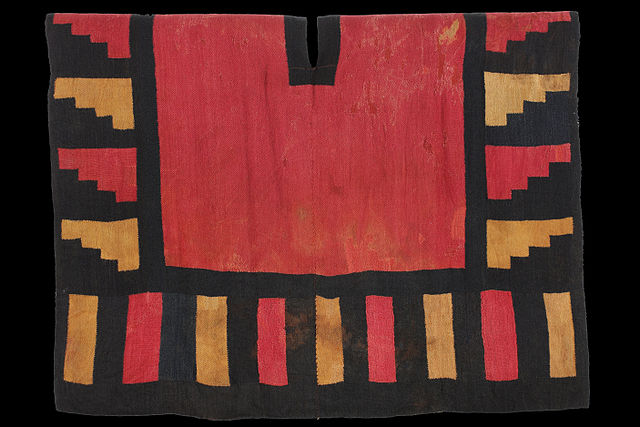The Andean textile tradition once spanned from the Pre-Columbian to the Colonial era throughout the western coast of South America, but was mainly concentrated in was is now Peru. The arid desert conditions along the coast of Peru have allowed for the preservation of these dyed textiles, which can date to 6000 years old. Many of the surviving textile samples were from funerary bundles, however, these textiles also encompassed a variety of functions. These functions included the use of woven textiles for ceremonial clothing or cloth armor as well as knotted fibers for record-keeping. The textile arts were instrumental in political negotiations, and were used as diplomatic tools that were exchanged between groups. Textiles were also used to communicate wealth, social status, and regional affiliation with others. The cultural emphasis on the textile arts was often based on the believed spiritual and metaphysical qualities of the origins of materials used, as well as cosmological and symbolic messages within the visual appearance of the textiles. Traditionally, the thread used for textiles was spun from indigenous cotton plants, as well as alpaca and llama wool.

Late Moche unku shirt fragment.
Wari wool-pile cap, 700-900 C.E., Yale University Art Gallery, New Haven.
Tupu (pin) before the 17th century
Nasca-Huari ceremonial unku of llama wool, 500 AD-700 AD.
A loom is a device used to weave cloth and tapestry. The basic purpose of any loom is to hold the warp threads under tension to facilitate the interweaving of the weft threads. The precise shape of the loom and its mechanics may vary, but the basic function is the same.
A treadle-driven Hattersley & Sons Domestic Loom, built under licence in 1893, in Keighley, Yorkshire. This loom has a flying shuttle and automatically rolls up the woven cloth; it is not just controlled but powered by the pedals.
A woman in Konya, Turkey, works at a vertical loom
A simple handheld frame loom
A Turkish carpet loom showing warp threads wrapped around the warp beam, above, and the fell being wrapped onto the cloth beam below.








